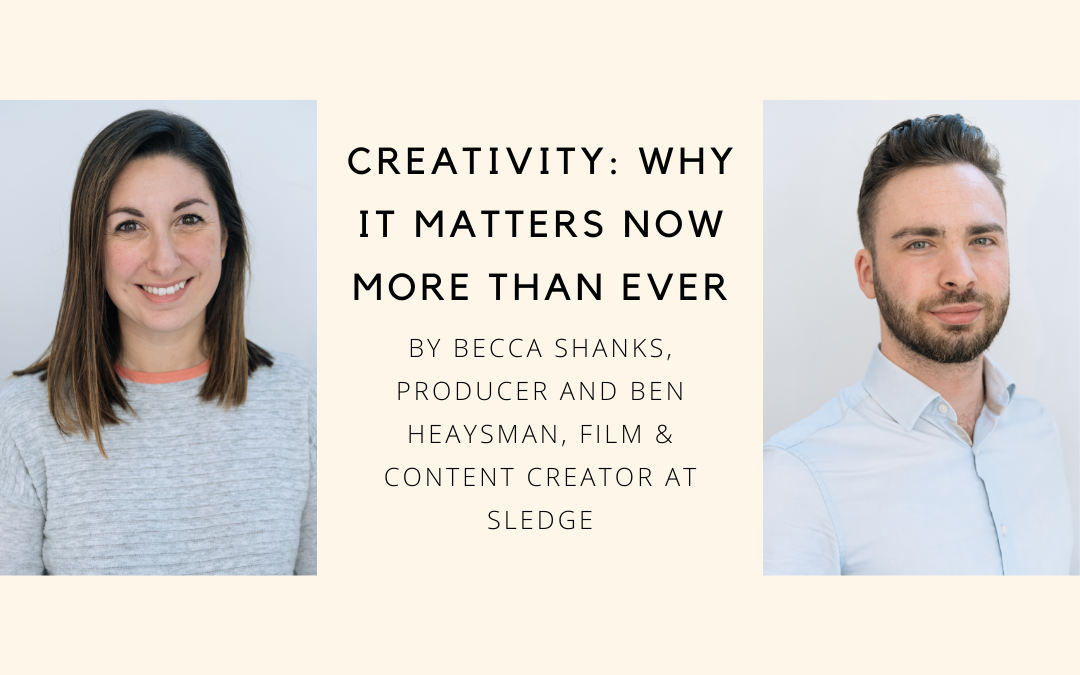By Becca Shanks, Producer and Ben Heaysman, Film & Content Creator at Sledge
Catching the attention of consumers, ensuring they remain engaged, and then ultimately facilitating a shift from brand awareness, to brand advocacy is one of our biggest challenges as marketers today.
Not only has the rise of digital devices seen attention spans decline, a Microsoft report conducted in 2015 found that the average attention span is just eight seconds. We are now surrounded by content through our multiple devices, which means audiences’ wants, needs, and expectations have evolved.
More than ever, people seek out the fresh and the new. After so long spent at home, with an inability to get involved in physical experiences, people want to engage in events in ways they’ve not encountered before; be that travelling to far flung locations, or simply relishing the opportunity to enjoy a day out shopping with family and friends again.
So, how do we connect brands to audiences in ways that resonate, and remain in their hearts and minds in the long-term?
Exploring the democratisation of creativity
“Pushing the creative envelope is essential for standing out in our always on, ‘it’s been done before’ era,” says Ben.
“This means embracing the notion that everyone is creative in one way or another, and making sure team members from different areas of the business, regardless of their job title or seniority level, are involved in the initial creative ideation process. Our diverse backgrounds, unique experiences and interests give different perspectives, which can be woven into an idea from different angles. We’ve found that the unique nuggets of information that come out of this exercise, can often signal the beginning of a winning concept.”
Becca adds: “When it comes to fleshing these ideas out further, it’s also important to consider how they can work in a practical sense. Consider it like a balancing act, ensuring creativity is at the forefront, yet also anchored by key elements of the client’s brief, as well as your own research, including their heritage and ethos, core brand or product message, target audience, budget, and timeline. Making sure the ideas have a purpose or add meaning to the event, and give impact to the experience as a whole, is key.”
Prioritising consistency to maximise impact of the idea
“While there might be many great ideas at play, honing in on a singular idea, aka the core creative thread, is essential. This gives an anchor to structure all messaging around. We consider the style of language we adopt, and also how this language is communicated via the different means available to us,” Becca says.
“With so many devices and modes of communication at our fingertips, adopting a storytelling approach is a must when it comes to developing messaging around the creative, and also ensuring it’s rolled out across these various platforms in a consistent way.”
Ben explains: “Each platform should tell the same story behind the creative idea, yet the strategies, techniques, and technologies used to communicate it need to be different to achieve maximum cut through.
“An approach that works in an event environment (it’s important to note that this will vary depending on whether it’s in-person, hybrid, or virtual), may not translate across platforms such as websites and social media. These come with their own recommended formats and lengths, from as little as 30 seconds for Instagram, to two minutes on YouTube.”
Becca adds: “End-to-end campaigns are a must today, which means it’s important to share the overall idea and story, yet adjust the way in which it is told depending on the platform, and the audience.”
Adopting new ways with film and branded content
“Film has no doubt diversified and become more sophisticated in recent years. This is thanks in part to the pandemic, and we’re seeing more and more clients pro-actively incorporate it into their event briefs,” Becca explains.
“Stings and highlight reels were commonplace pre-COVID, however branded content is now being utilised in more creative ways. It presents an opportunity for us to both think outside the box and engage audiences, by also looking beyond the event, to everything from websites and social media, to media opportunities,” she adds.
Ben says: “One great way to achieve creativity with film and branded content, is looking beyond your usual studio and instead scouting out a location that speaks to the creative idea, and the brand. This might be the rolling hills of the British countryside, a greenhouse, or a high-end hair studio. These environments carry great creative weight, and provide viewers with the opportunity to gain behind-the-scenes access, a content creation trend that is continuing to rise in popularity.
“Another creative technique that works really well right now is the use of hand drawn and live action imagery, which is then pieced together into bite-sized animations. These are great for translating complex information into something that’s easier to digest, and they generate a lot of interest on platforms such as social media, as well as when used at events,” he adds.
Creativity has always been important, and it’s more so in our current climate. However, once you focus in on your core idea, look beyond a singular platform or mode of communication, and become a true storyteller by weaving it throughout a campaign in a consistent way, you’ll find your message resonates with, and reaches, your intended audience.


